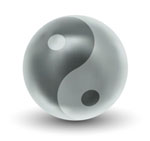 Heart disease is the number one death in both men and women in the United States. Every 1 in 4 deaths is from heart disease and its symptoms. There are a couple reasons that doctors report as to why health disease is such an issue. But the main reason always falls back on the state of nutritional health that Americans are in. Even genetic reasons fall back to nutrition; food can change genetics. Yes- lifestyle factors, especially nutrition status, can change whether a gene is turned on or off. Therefore, just because your mother had a heart disease, does not mean that this is something that will be given to you; unless you have the same lifestyle factors as your mother.
Heart disease is the number one death in both men and women in the United States. Every 1 in 4 deaths is from heart disease and its symptoms. There are a couple reasons that doctors report as to why health disease is such an issue. But the main reason always falls back on the state of nutritional health that Americans are in. Even genetic reasons fall back to nutrition; food can change genetics. Yes- lifestyle factors, especially nutrition status, can change whether a gene is turned on or off. Therefore, just because your mother had a heart disease, does not mean that this is something that will be given to you; unless you have the same lifestyle factors as your mother.
As more research has been done, as time and experience has passed, doctors now agree that inflammation in the cardiovascular system tissues are to blame for heart disease. It isn’t elevated cholesterol, it isn’t a diet that is low in fat… these factors have caused a history of obesity, diabetes, high cholesterol and heart disease. Without inflammation in the body, cholesterol wouldn’t accumulate. Inflammation is a result of your body’s own immune system responding to an invader: a virus, bacteria, a mold, or what it considers to be a toxin. A toxin can be from chemicals placed on the skin, ingested, or it can be from eating foods that the human body is not meant to digest. Acute inflammation is a healthy response whereas chronic inflammation is very harmful and now understood to be the reason behind 85% of all chronic illnesses.
Out of these things that cause inflammation, controlling what we eat to limit inflammation is the easiest. Therefore, nutrition and your state of nutritional health is key in influencing a healthy heart program. A diet low in fat and high in polyunsaturated fats and carbohydrates is causing repeated injury to our bodies. The repeated injury is causing the inflammation. Foods and their derivatives that are highly processed with flours, sugars, and vegetable oils (soy, corn, sunflower and safflower) are the biggest culprits in creating chronic inflammation. Is isn’t just heart disease, obesity and diabetes; these foods are often the ones taken out of any “low inflammation or healing” diets. If we avoid these foods, then what should we be focusing on?
Heathy fats, not processed fats. When the balance of omega 3s to omega 6s (and 7s and 9s for that matter) becomes disproportionate, cytokines are produce by the cell membrane. Cytokines cause inflammation. Consuming fats that are high in omega 3s will help to maintain a good balance of the omega family; the other omegas like 6,7, and 9 are more readily available in the typical diet. Butter from grass fed beef, farm raised eggs, wild caught fish and shellfish, fattier cuts of meat from grass fed and finished beef are all wonderful options for healthy fats. Olives, extra virgin olive oil, coconut flesh, coconut milk, flax seeds and avocados are also wonderful options as well.
Fiber found in foods… not a clear beverage or pill. Eat your fiber! Fresh fruits, vegetables, beans and legumes, and occasionally grains are excellent ways to fill up your plate and for getting the fiber necessary to decrease and limit inflammation. No juicing necessary- eat your fruits and their skins for the wonderful benefits of both soluble and insoluble fiber. Prunes, apples with the skin, raspberries and mangos are some of the highest fiber fruits. Leafy greens, sprouts, artichokes, broccoli, split peas, lentils, and black beans are some of the vegetables and legumes highest in the two fibers. Legumes may be difficult to digest so try soaking them overnight in a little lemon or lime juice. If that doesn’t help, maybe limit them and try other fresh vegetables for the same benefit. Occasionally having grains throughout the week can also provide fiber. Oatmeal, wild rice, barley, and amaranth are all great options. Don’t forget seeds! A teaspoon of ground flax seed on your once a week bowl of oatmeal is delicious. Quinoa, chia seeds, and raw pumpkins seeds are fibrous sources as well as proving to have other amazing benefits. Metamucil or psyllium husk powder can help, but they are not nearly close in nutrient density as other foods.
You don’t have to be a marathon runner or a Pilates instructor, but you should be exercising. Most experts and doctors agree that some form of exercise is wonderful for heart health. Exercise can really vary depending on your interest. The circulation of the blood is what the goal is in exercise when talking heart health; but there are many other obvious benefits as well. For some not use to exercise in their routine, even house cleaning can be categorized as exercise. For others that have a routine established, varying exercises that increase your heart rate is currently the most popular recommendation. Swimming, biking or cycling, weight training, aerobics classes, yoga, Tai Chi, pilates and walking all count as exercises that raise your heart rate. If your heart is healthy, and your exercise routine is established, then intense exercise 1-3 times per week is fine; keeping your heart rate increased for 15-30 minutes. If you are new to exercising or have some developing heart condition or health condition, start with gentle yoga or walking 4-5 times a week and increase after you feel comfortable. Important advice not to ignore- any new workout should not be done to its max exertion. You don’t need to be a hero. Movement and working against gravity is key; as long as you are avoiding sitting still for extended periods of time, you will be helping your heart.
The S word. Stress. There aren’t too many articles you can read in health news that doesn’t mention managing your stress. Our lifestyles are chaotic compared to lifestyles 75 years ago. In some ways it’s useful; in other ways, it has led to Westernized chronic illnesses like heart disease. If you are not prepared to limit stress, then it needs to be managed so it’s affects don’t land you a trip in the ER. Finding a meditation practice, time for prayer, or concentrated breathing practices even for as little as 10 minutes a day have shown significant results in the way your body responds to stress and the physical and functional damage stress has on your cells. A Pranayama practice can be something to start if meditation or prayer isn’t for you. Pranayama is a practice that originated in the West and is a branch of yoga. It literally means to “control the breath of life”. Pranayama yoga can increase energy levels and reduces stress levels. It also leads to feelings of self-confidence, empowerment, and greater control over anxiety. There are also reported cases of weight loss resulting from pranayama. This is possible because some of the pranayama exercises are more intense and can be a cardiovascular workout.
Some techniques include:
- Nadhi Sodhana: alternative nostril breathing, performed by blocking one nostril at a time and inhaling through the other. Because each nostril is connected to a different branch of the nervous system, this helps to balance the stress and relaxation response.
- Ujjayi Pranayama: victorious breath performed by breathing in deeply, constricting the throat, and exhaling slowly, creating an ocean-like sound.
- Sitali Pranayama: a breathing technique meant to cool the mind and body. Perform this exercise by curling your tongue, inhaling (creating a hissing sound), and exhaling through the nose with the mouth closed.
Cardiovascular disease from inflammation is a huge epidemic in our country. Take a moment to review your lifestyle. Perhaps you are great about going to the gym but could improve your diet and begin a 5-minute pranayama practice each day. Consider adopting these lifestyle practices; especially if you see a need in your day to day life.
 Amy Carlson is a Holistic Nutritionist who practices a whole-foods based approach in helping the body to heal and thrive. She has a strong interest in sharing what she has learned so that everyone has the opportunity to live in a healthy body. “Each body has the ability to heal if it is given what it needs and the understanding of why it is hurting is discovered and nurtured as well.” Learn more about her approach to wellness by visiting her website.
Amy Carlson is a Holistic Nutritionist who practices a whole-foods based approach in helping the body to heal and thrive. She has a strong interest in sharing what she has learned so that everyone has the opportunity to live in a healthy body. “Each body has the ability to heal if it is given what it needs and the understanding of why it is hurting is discovered and nurtured as well.” Learn more about her approach to wellness by visiting her website.
